(VOVWORLD) - Gian Gua in Phong Dien district, Can Tho city, was recognized as an historical relic in 2013. “Gua” is a typical tree of the Mekong Delta regional ecology, similar to the fig tree, and “Gian” is the term for its canopy. The region used to house a revolutionary base during Vietnam’s resistance wars and is associated with land reclamation in the 19th century.
From the center of Can Tho city, visitors take a ferry into Nhon Nghia commune then travel mostly by motorbikes on the narrow cemented road to reach Gian Gua.
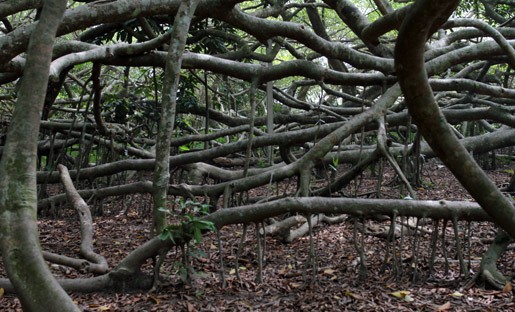 The Gua root and branches in intertwine to make a thick canopy. (Photo: Thu Hang/VOV) The Gua root and branches in intertwine to make a thick canopy. (Photo: Thu Hang/VOV) |
Gian Gua now covers an area of 2,700 square meters, much smaller than it used to be, due to the aftermath of war and environmental impacts. It overwhelms visitors with the primeval Gua tree, with its large roots and branches intertwining to form an intricate and thick canopy, making it very difficult to identify which is root and which is branch. Some of the branches are left with traces of bombs.
Ut Hien, a Nhon Nghia resident, said: “There is actually only one Gua tree in this area. Due to the humidity, the branches grew on and entered the soil and kept growing larger. The unique root was mostly destroyed during wartime. Now, we don’t know exactly where it is.”
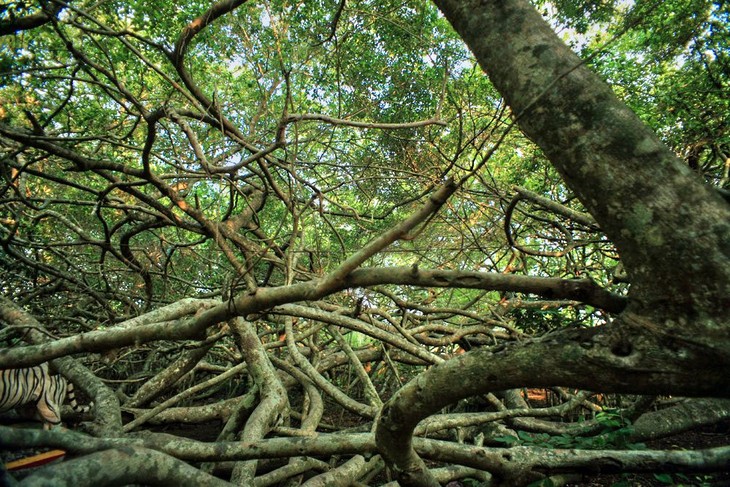 (Photo: Thu Hang/VOV) (Photo: Thu Hang/VOV) |
As a remote area, Gian Gua provided shelter and camouflage for revolutionary forces. It often hosted important meetings of the Party Committee of the Southwestern Military Zone. Between 1961 and 1965, a special force was trained in this area to prepare for the 1968 Spring Offensive and Uprising, a strategic turning point in the resistance war against American imperialists. This was also the base of the Vietnamese soldiers who liberated Can Tho City in April, 1975.
War veteran Phung Van Chien, former head of a brigade stationed at Gian Gua, told VOV: “During the war, the local people helped soldiers dig underground trenches, gave them food, and sheltered them. They shed their blood, sweat, and tears creating a spirit of solidarity to win the battles that led to the liberation of southern Vietnam in 1975.”
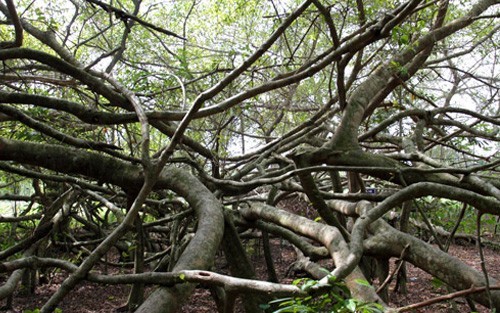 (Photo: Thu Hang/VOV) (Photo: Thu Hang/VOV) |
Nguyen Van Lien, a former militiaman of Nhon Nghia commune, said: “The patriotic militiamen here hosted forces deployed by the municipal Party Committee and the regional military zone. They dug three hideouts to shelter the soldiers.”
Gian Gua is associated with land reclamation and the fight against foreign invaders during the Nguyen feudal dynasty. Legend has it that in the middle of the 19th century, migrants from the Tien river reclaimed fertile land in Nhon Nghia commune, a majority of them belonging to the Nguyen clan.
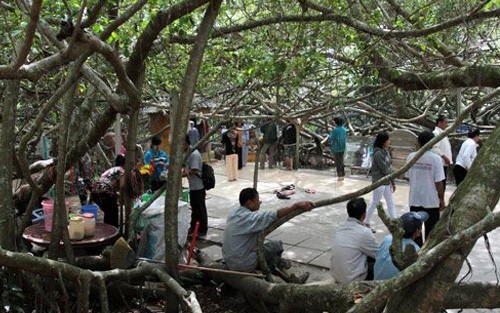 Gian Gua provides shelter for soldiers and weapons during Vietnam's wars (Photo: Thu Hang/VOV) Gian Gua provides shelter for soldiers and weapons during Vietnam's wars (Photo: Thu Hang/VOV) |
Nguyen Van Hien, chief manager of the Gian Gua historical relic site, said the new settlers had endured a disastrous fire and diseases. “When our ancestors moved here, Gian Gua had existed on an area of 4,000 square meters. The Gua tree died in the blaze, followed by several outbreaks of disease. A fortune teller asked the Nguyen people to build a shrine and revive the Gua tree to chase away the calamity. Then the tree grew to what it looks like today”, Hien said.
The Gian Gua area hosts two annual rituals for War veterans and Martyrs Day on July 27 and the anniversary of the Vietnam People’s Army on December 22.
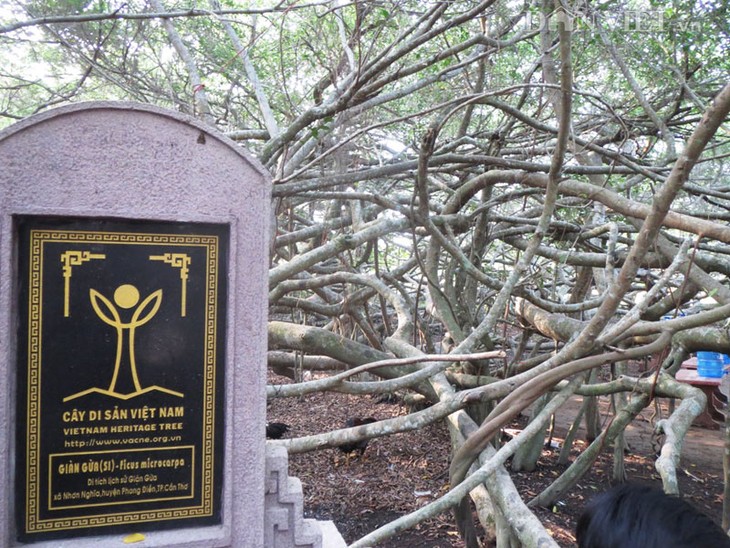 Gua tree is Vietnam's heritage tree. (Photo: Thu Hang/VOV) Gua tree is Vietnam's heritage tree. (Photo: Thu Hang/VOV) |
In 2011, Can Tho City’s People Committee approved a plan to build an eco-tourism area of over 33 hectares with Gian Gua being the center. In 2013, the Gian Gua area was recognized as a historical relic site and the Gua tree became Vietnam’s heritage tree.